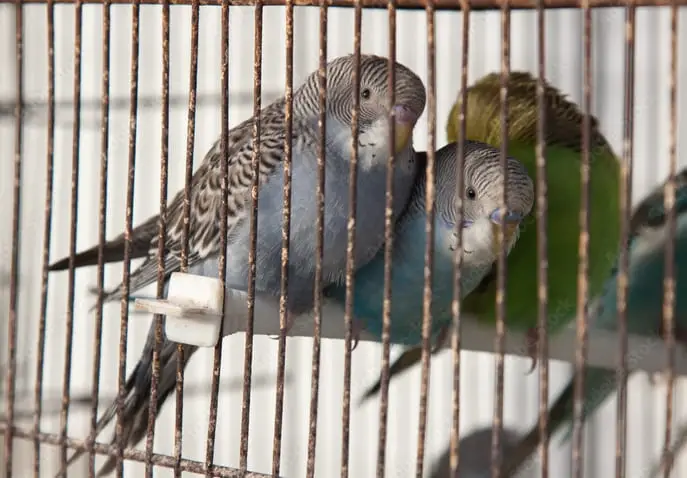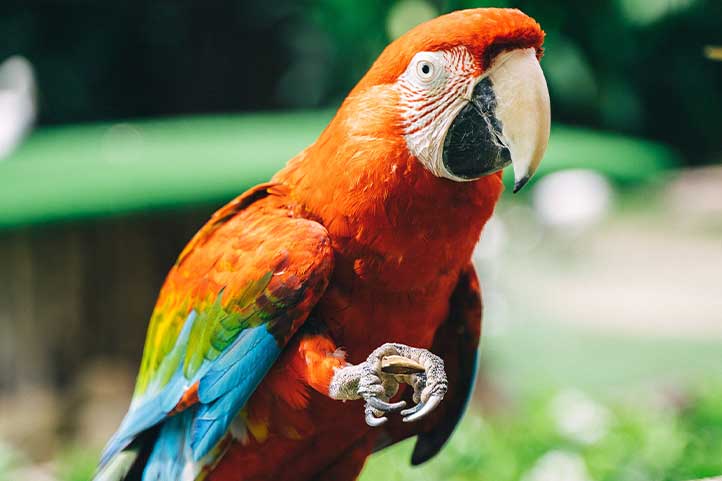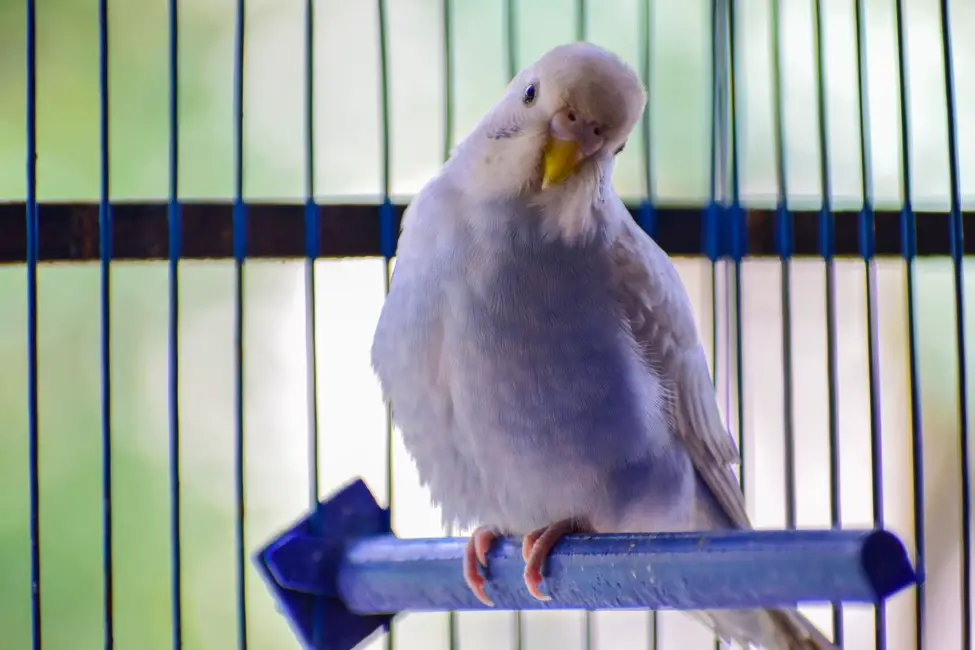Translated by Nick R
Nowadays, many people prefer to have a bird instead of a conventional pet. But be careful when choosing one because not all of them can be in your house. Therefore, in the following paragraphs we’ll provide you with relevant information about which birds you can have in your house without any problem and which species you cannot.
Table of Contents
What you need to know before adopting a bird
The first thing you need to know about birds is that not all of them are pets, as is the case with dogs and cats.
You might be wondering: How come? I’ve seen many birds at friends’ and neighbors’ houses.
Yes, you have surely seen many birds as pets, and maybe some more common than others. Within birds, there are different classifications according to their habitat and relationship with humans. In that sense, we talk about wild, exotic, and domestic species.
Wild birds
Wild birds are all species that live in their natural habitat without human intervention and depend only on their ability to adapt to the environment to survive.
Exotic birds
Exotic birds are all species that don’t belong naturally to the place where they are found, among which there are some domesticated exotic birds such as the Australian parakeets, which are very comfortable with people.
Domestic birds
Finally, we have domestic birds that are part of the unconventional pets. According to a survey conducted by the GFK Agency in 22 countries around the world, birds make up only 6% of pets, confirming that birds are not the typical pets you find in every home.
It happens that many species of birds that you thought were normal to have as pets are not, and vice versa. In fact, some exotic birds like the zebra finch are widely adopted.
This is because, what defines whether an animal is domestic or not is basically whether it has been genetically and ethologically (behaviorally) intervened by humans throughout history, co-evolving together.
Many times the domestication process doesn’t require a long time, but it depends on the biological and ethological adaptability of the species. An example of this is the Cockatoo nymph, which enjoys human contact.
Therefore, although we often find some apparently exotic birds as pets, the domestication process to which they have been subjected allows us to classify them as domestic birds. One, because they are not illegal. Two, because they are very common in homes and adapt very well to life with humans without affecting them detrimentally.
Why do I need this information?
It’s important to know the reasons why birds are not conventional pets (like dogs and cats) and why you can’t take their ownership lightly. Mainly, because not all birds are adapted to the home or to live in captivity and are covered by international laws, which protect wild species and some exotic species from illegal trafficking of species. In addition, because they have specific cares, which I’ll mention in more detail in a future opportunity.
Why is the possession of domestic birds regulated?
Regulations exist to control the keeping of these animals as pets, as established by international organizations dedicated to the protection of animals such as Birdlife International, the International Union for the Conservation of Nature (IUCN) and CITES.
These international protection mechanisms result from the decline in the populations of most of the world’s bird species. According to a study by the University of New South Wales based on the eBird sightings report, which includes data on 92% of the world’s living birds, only four species exceed a population of one billion and about 12% of bird species have fewer than 5,000 individuals. This makes it so important to know which birds you can and cannot keep at home so as not to commit a crime or be complicit in animal cruelty.
Birds that are not allowed to be kept as pets
None of the following birds can be kept as pets since they belong to the wild or exotic fauna protected by law, which protects them to avoid their commercialization and illegal possession.
This is mainly because their diet and behavior are not suitable for life in captivity due to their high vulnerability outside their natural habitat or their possible hostility to human contact.
Many of these species are also endangered, lots of them!
So just to name a few, here are the species you can’t keep as pets:
White-throated toucan
The Ramphastos tucanus is widely distributed in the Amazon and the Andes, which is in vulnerable status according to the IUCN classification.
Lear’s Macaw
The Anodorhynchus leari is found in northeastern Brazil, where it has been hunted by indigenous people and trafficked in the illegal pet market. It’s currently endangered (IUCN), while the population recovers.
Common Jacana
The Jacana Jacana, also known as “Tuqui Tuqui”, inhabits the wetlands of South America. Although it’s not endangered, it doesn’t like to be a pet and has great importance in its ecosystem.
Brown-throated Parakeet
The Eupsittula pertinax is one of the parakeet species that is not allowed in captivity or as a pet.
The murruccine monkey
This beautiful small owl, Athene cunicularia, is widely distributed on the American continent and is not endangered. Yet, it doesn’t like to be in captivity due to its feeding habits and behavior.
Aruco
Anhima cornuta is the flagship bird of the department of Arauca in Colombia. This little animal represents an important link in the food chain of its ecosystem.
Amazonian Parrot
The Amazona ochrocephala is a species native to almost all of South America. Despite being one of the most endangered species due to illegal pet trafficking, its population is not endangered.
Bahamian Turpial
Icterus icterus: there are several species of turpals, including the endemic and non-endangered Icterus icterus and the critically endangered Bahamas turpial.
If these birds are not pets, which ones are?
Birds allowed to be kept at home
The million dollar question is: Which bird species can I keep in my house? And why? Well, among them are:
Domestic canaries
Serinus canaria domestica are very common birds in homes. Mainly because they can live for about 10 years in captivity.
Lovebirds
Agapornis roseicollis these little animals are very particular since as their name indicates, they form inseparable monogamous pairs. They are very friendly with people and have a long life expectancy.
Domestic ducks
The Anas platyrhynchos domesticus bird is an excellent pet or barnyard animal thanks to its long domestication process and its affable temperament, unlike wild ducks.
Roosters or hens
The Gallus gallus domesticus is also a barnyard animal like the duck and with a long domestication process since approximately 10,000 years ago.
Cockatiels
Nymphicus hollandicus are good pets because they are docile, playful, and enjoy contact with people.
Australian Parakeets
Melopsittacus undulatus are very easy to care for and tame and are very good with children. Among them, the most common is the Australian Parakeet.
European Goldfinch
Carduelis carduelis originating from Europe and North Africa, they are popular pets simply because they have a beautiful singing voice and are very easy to tame.
Zebra diamond
Taeniopygia guttata also known as the mandarin diamond. It is one of the exotic bird species allowed as a pet. This species of songbird is an excellent choice because it is very sociable and has a similar diet to parakeets.
Amazon Parrot
Amazona amazonica is a species that is not endangered despite being persecuted by the illegal pet market.
Everything in life has consequences…
Impact of the illegal pet trade
This practice was legal at some point in history, mainly in the 19th century, when tons of feathers and skins were exported for the fashion market. Nowadays, trafficking for these purposes has been banned, but the pet market has become more relevant and is endangering several species of wild birds, such as the aforementioned White-breasted Toucan.
Illegal trafficking condemns many animal species to be used as merchandise and, in some cases, brings them to the brink of extinction. This practice leads to animal abuse and puts biodiversity and public health at risk.
Curious fact
Latin America is the region with the greatest biodiversity and the main bird supplier for the illegal market. This is evidenced in the ranking of the 5 countries with the highest number of endangered birds:
- Brazil with 170 species.
- Indonesia with 155 species.
- Colombia with 136 species.
- Peru with 121 species.
- Ecuador with 106 species.
Reflection
Now that you know which species of birds can be pets and which cannot, you have the responsibility to adopt a pet to make it happy and say NO to the purchase or adoption of unauthorized animals to avoid the illegal trafficking of wild and endangered animals. We all contribute to the conservation of our wildlife.


